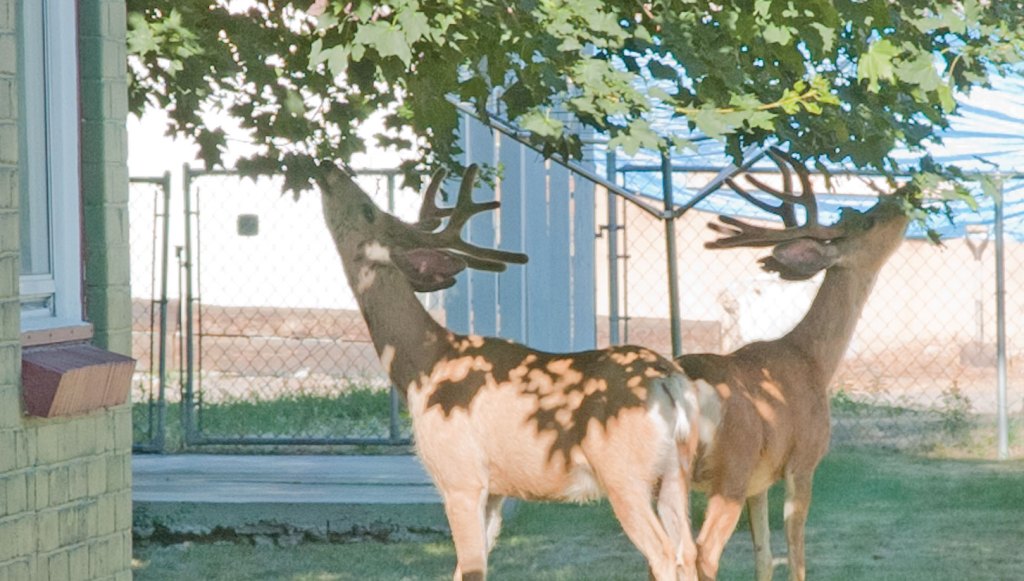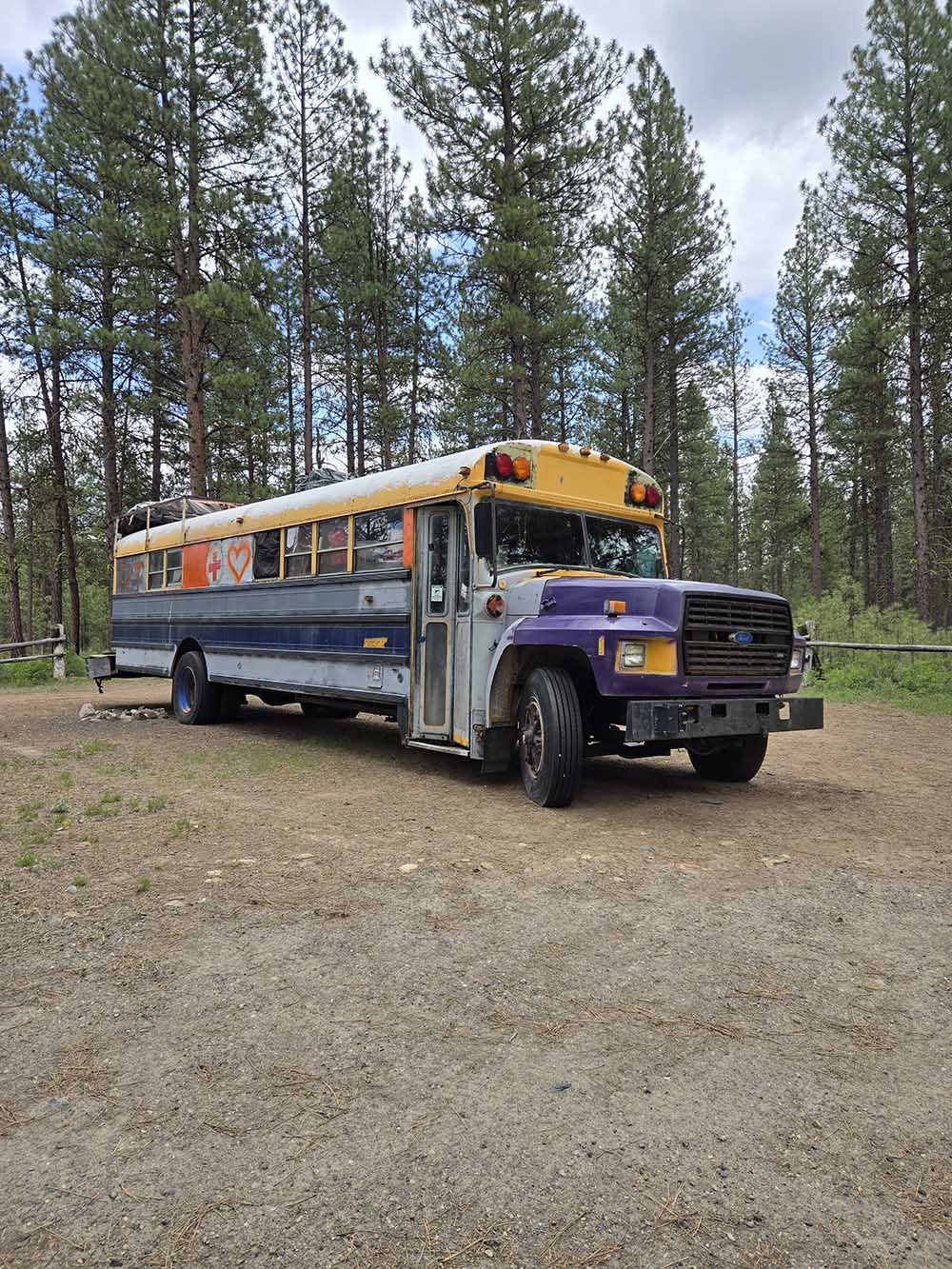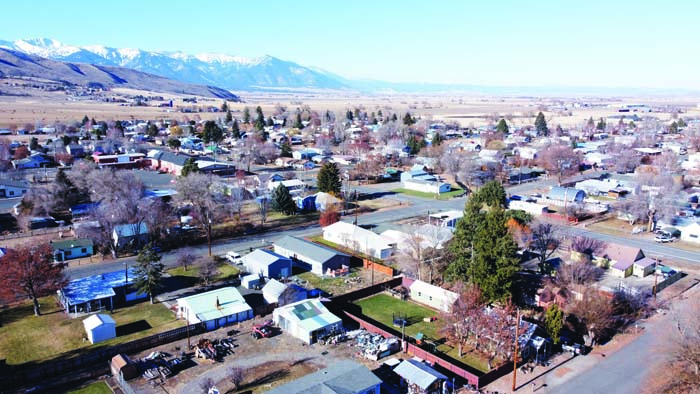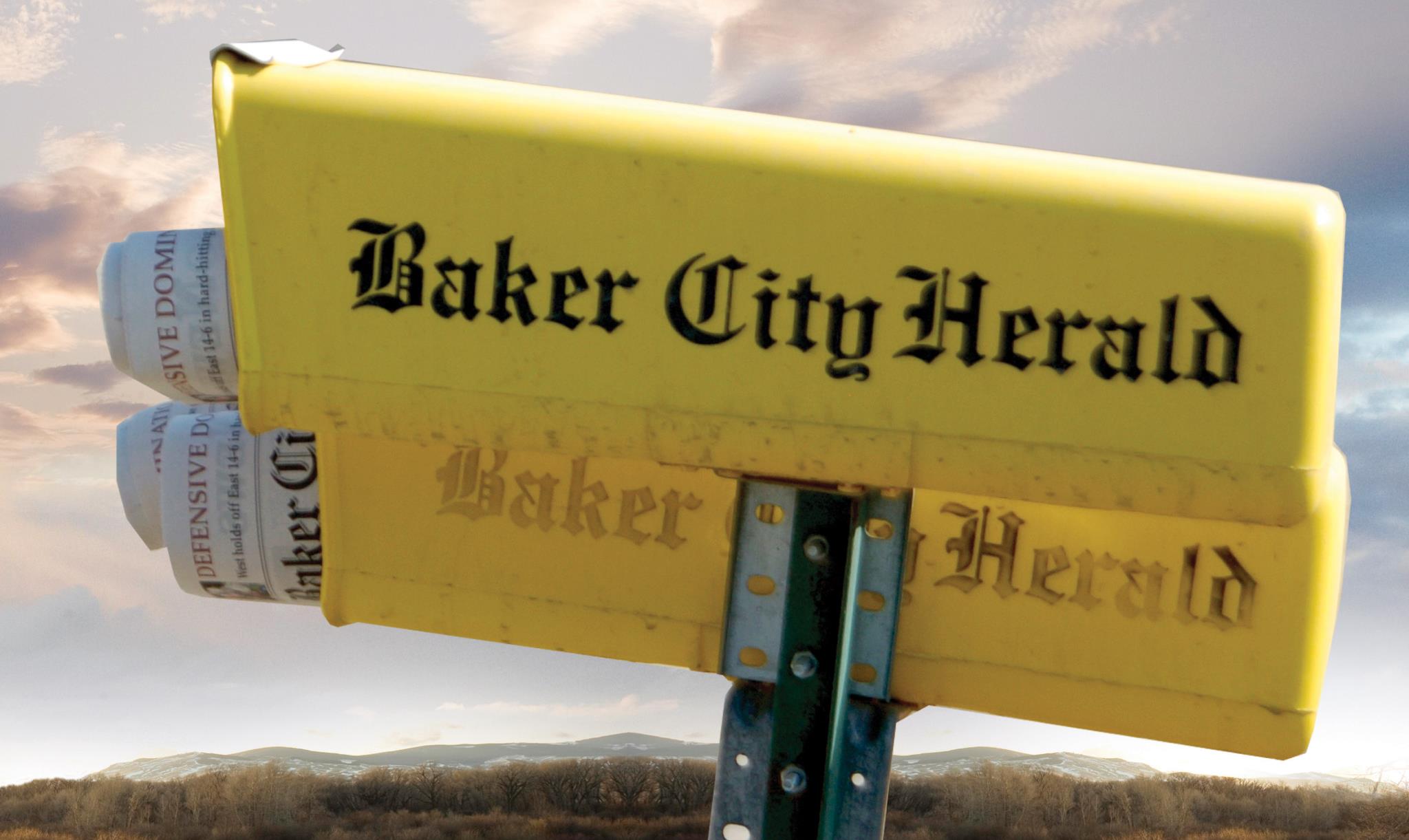City mulls deer control
Published 1:45 pm Wednesday, May 9, 2018

- S. John Collins / Baker City HeraldYoung mule deer bucks find a tasty snack from a backyard maple tree in a residential neighborhood.
The Baker City Council on Tuesday started a conversation that could lead to the city paring the population of deer that live in town year-round by killing some of the animals and donating the venison to local food banks.
But city officials have to take several more steps, all of which will be subject to public comment, before applying for kill permits from the state.
City Manager Fred Warner Jr., at the Council’s request, invited Brian Ratliff, a state wildlife biologist, to Tuesday’s meeting to discuss the deer situation and the city’s potential options.
Warner said city officials have multiple concerns about the deer herds, including the possibility the animals will attack people, attract cougars and others predators, pose hazards to drivers and spread disease.
A more common issue is the animals’ appetite for city residents’ flowers, shrubs and trees.
Ratliff is the district biologist at the Oregon Department of Fish and Wildlife’s (ODFW) Baker City office.
ODFW has the legal authority to manage the state’s deer and other game animals, including herds that are inside city limits.
Cities will soon have more flexibility in dealing with deer, thanks to a bill the Oregon Legislature passed in July 2017.
Senate Bill 373 requires the state Fish and Wildlife Commission to start a pilot program, by Jan. 1, 2019, designed to allow cities to reduce their deer populations by applying to the state for permits allowing the city to kill deer and, when possible, donate the venison to local charities.
Deer killed under the auspices of the law would become the property of the state.
The law also states that cities must first pass an ordinance that prohibits residents from intentionally feeding deer, and an ordinance or resolution stating that deer numbers are high enough to constitute a “public nuisance.”
The city has not drafted either of those documents.
If the Council does adopt both ordinances, the city could then ask ODFW to issue permits authorizing the killing of deer inside the city limits.
Councilor Arvid Andersen said he supports the Council working on ordinances and seeking permits from ODFW.
Andersen said he has seen cougar tracks near his home in south Baker City. He’s also concerned about the potential for a deer to attack someone.
“I’m really concerned that a kid will get run over by a spooked deer,” Andersen said.
In an interview Tuesday morning, Ratliff said he has not heard any reports of a deer hurting a person in Baker City, although the animals can act aggressively, especially does defending what they perceive to be threats to their fawns, and bucks during the late autumn mating season.
Ratliff said deer have stomped dogs in town.
He said ODFW would try to remove individual deer that have proven to be dangerous.
If the city ends up applying for permits, ODFW officials would have to approve the city’s proposed method for killing deer to ensure its safety, Ratliff said. He thinks that would be relatively simple — town deer are much less skittish than their forest- and range-living cousins — but also time-consuming.
One major challenge, Ratliff said, is that most town deer spend much of their time in residents’ yards, and the city would need landowners’ permission to send its hired agents — possibly law enforcement officers — to kill deer on private lots.
Possibly the safest strategy would be to use nets to trap the deer before shooting them, Ratliff said.
Opposition from the public is also likely to be a factor, he said.
“For every person here who doesn’t like deer, there are three that do,” Ratliff told the City Council Tuesday night. “It’s not as simple as you think.”
Christopher Christie belongs to the former group. In an email to the City Council, he wrote that deer have damaged fruit trees and other plants in his yard, on 15th Street near Broadway in west Baker City, over the past several years.
“I have tried various methods to deter them, but too often I anticipate seeing the blooms on my tulips and roses only to find them removed by the deer,” Christie wrote. “I have had young fruit trees severely set back and older trees pruned back to half-inch wood.”
Although some people might suggest ODFW trap deer in town and truck them to more suitable habitat, that’s not a feasible option, said Doug Cottam, ODFW’s Wildlife Division administrator.
Many deer don’t survive the move, Cottam said, while others try to return.
See more in the May 9, 2018, issue of the Baker City Herald.





